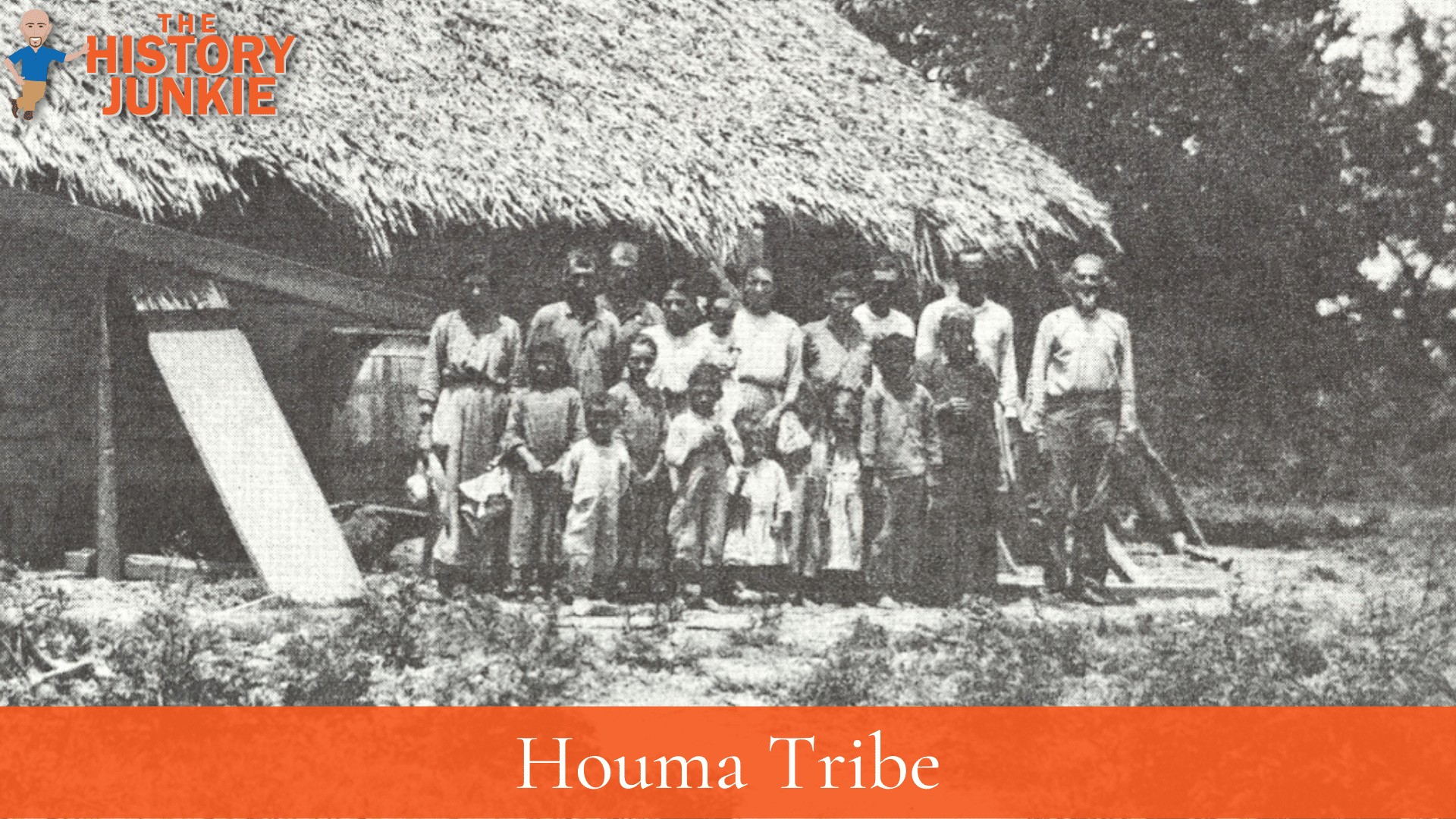
Jump to:
#1. The Houma Tribe Is From Modern-Day Louisiana
The Houma Tribe settled east of the Mississippi River in present-day Angola, Louisiana. They still survive today in the state and are one of the recognized tribes within the state. They would be considered a Southeast Indian Tribe.
Members of the tribe maintained contact with other Choctaw communities after settling in present-day lower Lafourche and Terrebonne parishes.
They used the waterways to harvest fish and crawfish, to supply their water needs, and to travel. It is not certain how the Houma settled near the mouth of the Red River (formerly called the River of the Houma).
#2. The French Were The First Europeans To Make Contact

The French Explorer Robert de La Salle, would be the first famous explorer to make contact with the Houma tribe.
In 1682, the French explorer Brinson noted in his journal that he had passed near the village of the Oumas. This brief mention marks the entry of the Houma into written and recorded history.
Later explorers, such as Henri de Tonti and Pierre Le Moyne d'Iberville, give a fuller description of the early Houma.
Iberville reported the Houma village to be six to eight miles inland from the east bank of the Mississippi, near the mouth of the Red River.
When Europeans arrived in greater numbers in the area, they struggled with the language differences among the Native Americans.
They thought each Native American settlement represented a different tribe and made errors in their designations of the peoples as a result.
#3. Disease Hurt Their Population
European disease presented many challenges to the Native American populations. Due to not having any natural immunity, the tribes often took high mortality rates from the various epidemics.
This would cause many tribes to weaken and be forced to merge with other tribes that spoke a similar language in order to survive.
This also allowed for much easier expansion into their land.
The Houma tribe was no exception. They saw many casualties from disease and would be forced to take different measures to survive.
#4. The Houma Migrated South And Merged With Other Tribes To Survive
In 1706, the Houma migrated south from the Red River region to other areas. One account said they wanted to move closer to their new French allies, concentrated in the New Orleans area and away from the English-allied tribes to the north.
From the 1730s to the French-Indian War, European wars played out in North America.
Numerous Native American bands formed protective alliances with Europeans to deal with the conflicts.
As early as 1739, the French reported that the Houma, Bayougoula, and Acolapissa were merging into one tribe.
Though the tribe remained predominantly Houma, the last remnants of many tribal nations joined them for refuge.
Because of increasing conflicts among the English, French, and Spanish colonists, the Houma migrated south by the beginning of the 19th century to their current locations in Lafourche and Terrebonne parishes.
Oral history and modern scholars agree that they made a settlement called Chukunamous. The modern city of Houma, Louisiana, was later developed at this site.
The tribe moved further south.
#5. The Houma Tribe Continued Into The Modern Era
The Houma People maintained much of their sovereignty during American expansion. They had moved south and had many settlements that allowed them to support themselves.
The French left the area and sold the land to President Thomas Jefferson in the famous transaction known as the Louisiana Purchase.
During the 20th century, the Houma tribe remained in their location. As southern Louisiana became more urban and industrialized, the Houma remained relatively isolated in their bayou settlements.
The population of the Houma at this time was divided among six other Native American settlements. Travel between settlements was made by pirogues and the waterways; the state did not build roads connecting the settlements until the 1940s.
Like the other Native American populations, the Houma were often subjected to discrimination and isolation.
After the Civil War ended and Democrats regained control of the state, segregation began.
They had previously classified the Houma and other Native Americans as free people of color and required them to send their children to schools established for the children of freedmen when available.
The state was slow to construct any public schools in the Houma settlements.
It was not until 1964, after the Civil Rights Act was passed and ended segregation, that Houma children were allowed to attend public schools.
Before this time, Houma children attended only missionary schools established by religious groups.
